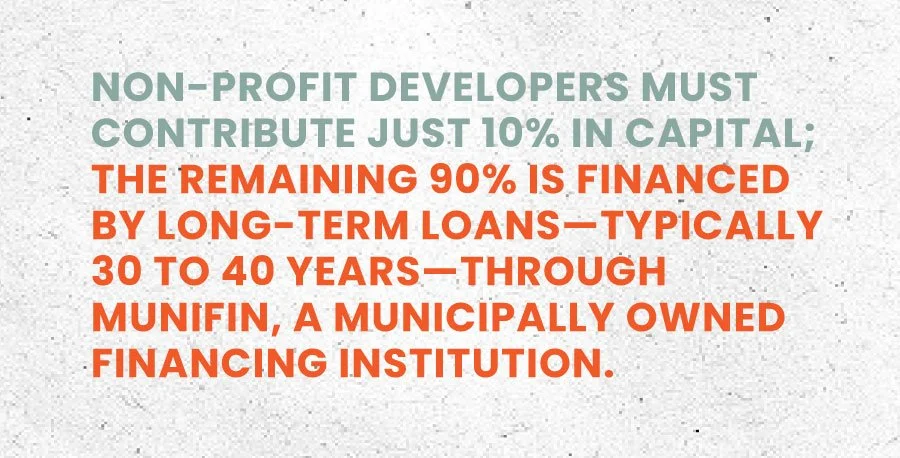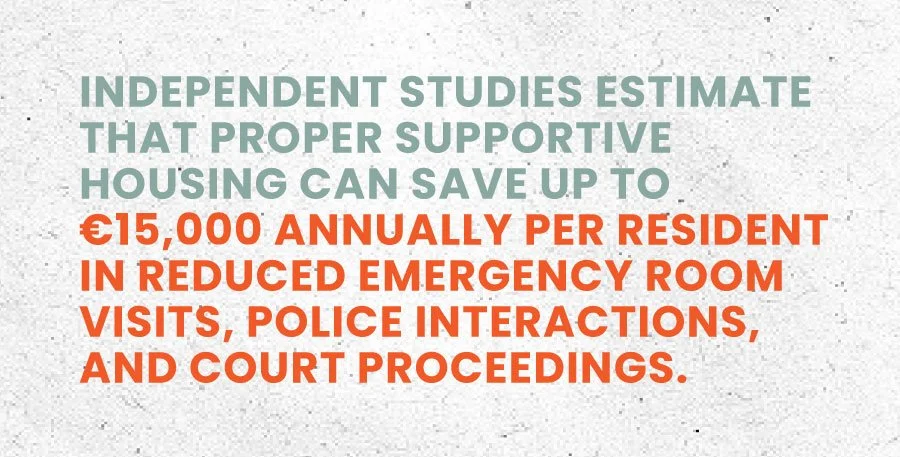What We Can Gain from Finland’s Commitment to Supportive Housing and Ending Homelessness
Earlier this year I wrote about the Minnesota Interagency Council on Homelessness’ 2024 Point-In-Time (PIT) Count and the state’s troubling 9.4% increase in homelessness. Despite ongoing efforts to address the growing challenge of homelessness in Minnesota, we’re falling short of having a significant impact.
Where the Challenges Lie
The challenge of homelessness is multifaceted. It requires not only affordable places to live but also the supportive services that help individuals maintain stability once housed. In recent years there have been significant efforts to preserve existing buildings and build new affordable units, but insufficient funding streams, rising operational costs, and a lack of well-funded specialized services have created significant challenges in affordable and permanent supportive housing. In shelters the lack of privacy, safety, and suitable accommodations for families, couples, and individuals with pets as well as insufficient funding all impact the current model’s ability to fully serve unsheltered neighbors. These obstacles hinder our ability to address homelessness.
Learning From Finland
It is apparent that addressing homelessness requires bold rethinking. And it was in the course of this bold rethinking that in February of this year, I led a team of Minnesotan housing and service leaders on a trip to Helsinki. Our goal? To study one of the world’s most effective responses to homelessness: Finland’s national Housing First approach to supportive housing.
Partnering with Juha Kahila, International Affairs Director at the Y Foundation, we engaged in a deep dive into Finland’s homelessness prevention strategies - hoping to better understand the mechanics of development funding, operational models, service alignment and funding, and the broader policy frameworks that have made Finland a global leader in ending homelessness.
The Simplicity and Speed of Housing Development
Minnesota, like much of the United States, struggles with the complexity of funding and developing affordable housing. Multiple sources - tax credits, public loans, grants, impact investments - are often layered together, each with distinct and sometimes conflicting requirements. Projects frequently take years to fund, permit, and construct.
Finland presents a radically simpler model. Non-profit developers must contribute just 10% in capital; the remaining 90% is financed by long-term loans—typically 30 to 40 years—through MuniFin, a municipally owned financing institution. The government subsidizes interest rates to 1–2%, a mechanism that sharply reduces carrying costs. Additionally, most land is government-owned and leased to developers, reducing acquisition hurdles.
In Finland’s urban centers, this structure allows developments to go from planning to completion in as little as one year, with two to three years being the norm. In stark contrast, timelines in Minnesota often extend well beyond that. Importantly, housing supply in Finland has kept pace with demand, thanks in part to this efficient, coordinated approach.
From the Staircase to Housing First
Before 2008, Finland followed the traditional staircase model: individuals experiencing homelessness would first go through shelters, then transitional programs, before accessing permanent housing. However, this approach was fragmented and often ineffective.
Rising rates of homelessness, a growing body of international research, and resolute political will converged to drive systemic change. Finland formally adopted the Housing First model in 2008, making it a national policy.
Today, instead of requiring individuals to prove their readiness for housing, Finland offers permanent housing immediately, coupled with tailored support services.
The results are compelling. Finland now provides permanent homes for more than 6,000 people. Since 2008, they have cut homelessness in half. Shelter systems have been largely phased out, replaced by smaller supported housing buildings. Prevention has also become a cornerstone of the approach, with housing advisors working to prevent evictions and keep residents stably housed and proactively supported.
How Services Are Funded and Delivered
In Finland, the housing and service systems are distinct but coordinated. ARA funds the physical housing stock, while the Ministry of Social Affairs and Health funds services through the Funding Centre for Social Welfare and Health Organizations (STEA). This clear separation ensures accountability and budget transparency.
Unlike in Minnesota, where supportive services and building operations are often funded by the same public sources, alongside Medicaid funding and patchwork grants, Finnish counties receive universal block funding from the central government. These Wellbeing Service Counties (including Helsinki) can then choose whether to deliver services directly or purchase them from NGOs. This model not only ensures predictability but also encourages local innovation.
We observed that services are tailored to each tenant’s level of need. Housing options range from independent scattered-site apartments with case management to Housing First units with 24/7 staffing, including medical personnel. Residents who will need significant support are often referred to specialized buildings with high resident-to-staff ratios—3:1 in some cases. This contrasts sharply with Minnesota, where tenants who will rely on supportive services are frequently referred to integrated settings with minimal onsite support, relying instead on spotty case management.
The Economics of Ending Homelessness
Cost-effectiveness is evident in Finland’s strategy. The City of Helsinki spends approximately €16 million annually on homelessness services, with an average cost of €25,000 per tenant per year. Tenants contribute to rent, and the remaining service costs are publicly funded.
Independent studies estimate that proper supportive housing can save up to €15,000 annually per resident in reduced emergency room visits, police interactions, and court proceedings. These economic gains, coupled with improved social outcomes, make the case for Housing First as not only a humane but also fiscally responsible policy.
Implications for Us All
Since we returned from Helsinki, the landscape at home has shifted significantly. Housing first values have been attacked, Congress is considering a budget that proposes deep cuts to federal rental assistance (cuts that could push thousands of Minnesota families out of their homes and destabilize entire communities). Just last week, the current administration signed an executive order, criminalizing street homelessness and allowing for involuntary civil commitment for those dealing with addiction and mental health challenges.
This move away from housing and services as the first solution to homelessness presents a significant challenge for our work. It is crucial that we uphold the dignity and humanity of those facing homelessness in this current climate. To do so, we must craft a counter narrative and plan that speaks to effective solutions.
While national leadership is saying housing first has failed, the reality is that it has not been intentionally implemented or sufficiently funded. Finland's successful housing first program is proof that with broad collaboration, a commitment to implementation, and dedicated funding, housing is the solution to homelessness.
A commitment to this level of funding and support is within reach in Minnesota, but a rethinking is essential. Sufficient funding for need aligned services could change the trajectory of homelessness in our state. It could lead to housing stable outcomes for tenants. It could relieve strain on operators and service providers. It could alleviate the impacts of street homelessness on neighborhoods and businesses.
Sadly, these current regressive measures fail to address root causes or offer meaningful solutions. More importantly, they deviate from evidence-based practice. Finland shows us that Housing First works. That intentional implementation, robust funding, and cross-sector collaboration can change the trajectory of homelessness. In light of current challenges, doing so will require courage and commitment. Now is the time to prove we have both.
Written by Carla Godwin - Director | PERIS Foundation



